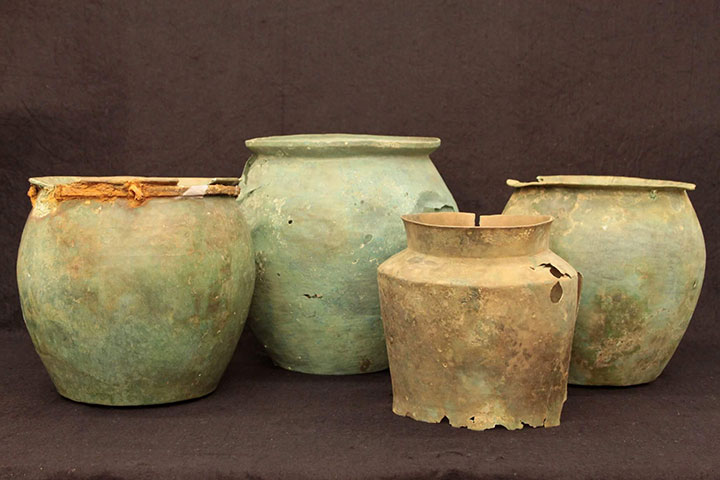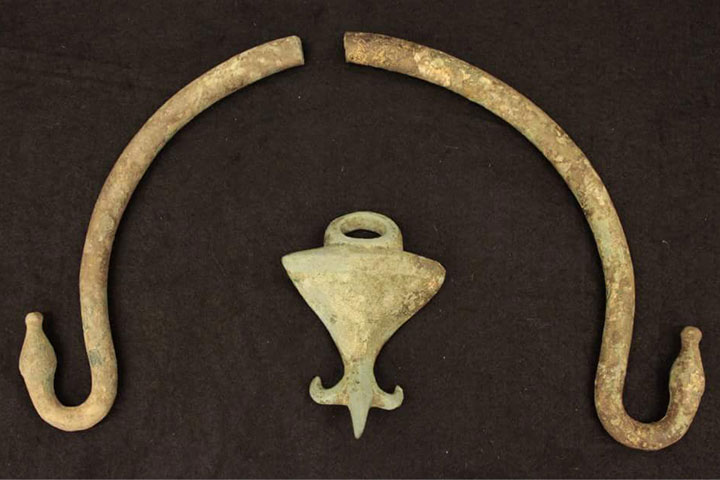
New Discoveries Tell History of Italy’s Chianti Region
A new exhibition opening this June at the Florence National Archaeological Museum will feature nearly 300 ancient items excavated from the Florida State University-operated archaeological site Cetamura del Chianti.
The exhibition reveals the ancient history of the Chianti region, said Nancy de Grummond, the M. Lynette Thompson Professor of Classics and the director of excavations at Cetamura del Chianti, an archaeological site in the hills of the Chianti region.
“I’ve wanted to do an exhibit like this ever since I became the director,” de Grummond said. “My dream is coming true.”
The show, “Wells of Wonders: New Discoveries at Cetamura del Chianti,” opens June 9 and runs until Sept. 30, 2017.
Nearly 300 items pulled from two wells that sit on the site explore the history of Etruscan, Roman and medieval civilizations.
While the majority of items are tools or artifacts — 14 bronze pitchers, bowls and buckets were recovered — there are also some ecological exhibits. Researchers found a huge series of grape seeds dating back to 300 B.C. suggesting the area was full of vineyards even then. Visitors to the exhibition will be able to see a video explaining the excavation process and how finding these seeds illuminated the history of one of the world’s most popular wine regions.
Though some items were recovered in perfect or near-perfect shape, often only fragments or shards of an item have been excavated. To give visitors a better view of what a given artifact looked like, fragments will be placed next to a 3D-printed recreation of the object.

Cetamura del Chianti is an archaeological site that was discovered in 1964 by an Italian avocational archaeologist named Alvaro Tracchi and has been investigated by Florida State University since 1973. Since 1983, de Grummond has run the excavation of the site that has proven to be a treasure trove of information about the Etruscan settlement over multiple eras.
It took researchers years to reach the bottom of one of the two wells on the property. This well is cut deeply into the bedrock and water seeps in from the sides. The second well, which was more accessible, is more traditional and has walls of masonry. Each is about 6 feet in diameter, so when archaeologists descend into the well, they have to take a breathing apparatus and lighting equipment.
They only go down for shifts of about two hours.
Throughout the excavation process, de Grummond has been aided by undergraduate and graduate students at Florida State University through International Programs, students and colleagues at Studio Arts College International (SACI) and Italian archaeologists from the firm ICHNOS: Archeologia, Ambiente e Sperimentazione, who engineered the excavation of the two wells.
Former FSU graduate students Laurel Taylor, now a professor at University of North Carolina Asheville, and Charles Ewell, who teaches in the Florence programs for New York University and Syracuse University, have continued to work at the site and have brought along their students, too.
Ken Kobré, a retired photojournalism professor and FSU alumnus who was part of the inaugural class at the FSU Florence Study Center in 1966, photographed all of the items for the exhibition catalog.
To learn more about de Grummond’s work, visit the program’s Facebook page to see photos from the dig.




